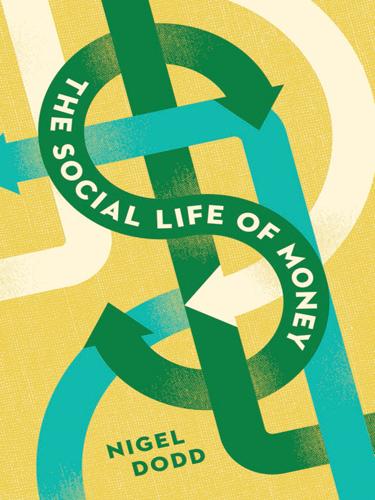
The Social Life of Money
by
Nigel Dodd
Published 14 May 2014
The Heretic’s Guide to Global Finance: Hacking the Future of Money, January 12, http://suitpossum.blogspot.co.uk/2014/01/crypto-patriarchy-problem-of-bitcoins.html. Scott, C. (1966). “The Obsolete ‘Anti-Market’ Mentality: A Critique of the Substantive Approach to Economic Anthropology.” American Anthropologist 68: 323–45. Scott, C. (1969). “The Anti-Market Mentality Re-Examined: A Further Critique of the Substantive Approach to Economic Anthropology.” Southwestern Journal of Anthropology 25: 378–406. Scott, C. (1973). Economic Anthropology: Problems in Theory, Method, and Analysis. Hand-book of Social and Cultural Anthropology, J. J. Honigmann, Ed. Chicago, Rand McNally. Seaford, R. (2004). Money and the Early Greek Mind, Cambridge, U.K., Cambridge University Press.
…
Brown, Herbert Marcuse and the romantic tradition.” Ph.D. thesis, University of Nottingham, U.K. Gregory, C. A. (1997). Savage Money, Amsterdam, Taylor & Francis. Gregory, C. A. (2012). “On Money Debt and Morality: Some Reflections on the Contribution of Economic Anthropology.” Social Anthropology 20 (4): 380–96. Grierson, P. (1978). “The Origins of Money.” Research in Economic Anthropology 1: 1–35. Grignon, P. (2006). Money as Debt (film), Moonfire Studio, Canada. https://www.youtube.com/watch?v=CB5M5nuTD9w. Grignon, P. (2009). Money as Debt II (film), Moonfire Studio, Canada. https://www.youtube.com/watch?v=6_lB3AJSMRg.
…
Polanyi’s early engagement with the effect of “market money”—he later calls it general-purpose money—comes as part of a broader investigation of the development of market society that has subsequently influenced a number of fields, including the new economic sociology, international political economy, economic anthropology, and the voluminous literature on globalization. It is a puzzling, contradictory text because Polanyi appears to shift between a portrayal of the market as a cold and anonymous space that constitutes a threat to society and a more complex view of the market as necessarily embedded within society.

Wealth and Poverty: A New Edition for the Twenty-First Century
by
George Gilder
Published 30 Apr 1981
Browning and William R.Johnson) Divine, Father division of labor divorces Dodd, Chris Doeringer, Peter Dole, Robert domestic service Dow Jones Industrial Index downward mobility Drucker, Peter dual labor-market theory Dunne, John Gregory Dynamic Economics (Burton Klein) earnings. See income Earnings Capacity Utilization Rates (Irwin Garfinkel and Robert Haveman) earnings-capacity utilization studies Eastman, George Economica Economic anthropology Economic Anthropology (Melville Herskovits) economic classes, resistance to integration and economic growth. See Growth Economic noosphere The Economic Problem (Robert Heilbroner and Lester Thurow) economics, golden rule of institutionalist critique of limitations of Economics and the Public Purpose (John Kenneth Galbraith) Economic texts Edelman, Peter Edison, Thomas education, bilingual blacks and class and credentialism and of displaced upper classes EEOC.
…
Such a universal trait as self-interest—altogether as prevalent in any socialist backwater or deadening bureaucracy as in the realms of great enterprise—will reveal virtually nothing of the rare sources of riches in human society. Not taking and consuming, but giving, risking, and creating are the characteristic roles of the capitalist, the key producer of the wealth of nations, from the least developed to the most advanced. The evidence begins in the works of “economic anthropology,” from Melville Herskovits’ pioneering work by that name, to Marvin Harris’ Cannibals and Kings, from Marcel Mauss’ classic The Gift to Claude Levi-Strauss’ The Savage Mind. Most studies of primitive society abound with tales of gifts, offerings, “prestations,” presents, tributes, and ritual exchanges, all the elaborate patterns of giving and receiving that preoccupy tribal groups when they struggle to transcend the limits of their lives of labor and subsistence.
…
See also, Marcel Mauss, Essay on the Gift (New York: Norton, 1955). 3 Marvin Harris, Cannibals and Kings: The Origins of Cultures (New York: Random House, 1977), pp. 71–72. 4 Helen Codere, “Fighting with Property, a Study of Kwakiutl Potlatching and Warfare, 1792–1930,” Monographs of the American Ethnological Society, vol. 18 (1950), pp. 90–91. 5 Melville J. Herskovits, Economic Anthropology: The Economic Life of Primitive Peoples (New York: W. W. Norton, 1965), p. 178. 6 For an inspired essay in legal philosophy reaching this conclusion, see Richard J. Posner, “Utilitarianism, Economics, and Legal Theory,” Journal of Legal Studies (the University of Chicago Law School) 8, no. 1 (January 1979), pp. 108–144. 7 Ivan H.

Debt: The First 5,000 Years
by
David Graeber
Published 1 Jan 2010
To really understand what debt is, then, it will be necessary to understand how it’s different from other sorts of obligation that human beings might have to one another—which, in turn, means mapping out what those other sorts of obligation actually are. Doing so, however, poses peculiar challenges. Contemporary social theory—economic anthropology included—offers surprisingly little help in this regard. There’s an enormous anthropological literature on gifts, for instance, starting with the French anthropologist Marcel Mauss’s essay of 1925, even on “gift economies” that operate on completely different principles than market economies—but in the end, almost all this literature concentrates on the exchange of gifts, assuming that whenever one gives a gift, this act incurs a debt, and the recipient must eventually reciprocate in kind.
…
“Barter and Money in an Indonesian Village Economy.” Man (New Series) 24 (3): 399-418 Barreau, Andre. 1961. “Indian and Ancient Chinese Buddhism: Institutions Analogous to the Jisa.” Comparative Studies in Society and History 3 (4): 443-451. Barth, Frederick. 1969. “Economic Spheres in Darfur.” Themes in Economic Anthropology, ASA Monographs no. 6, pp. 149-174. London: Tavistock. Basham, Arthur Llewellyn. 1948. “Harsa of Kashmir and the Iconoclast Ascetics.” Bulletin of the School of Oriental and African Studies, University of London 12 (3/4): 668-99. Baskind, James. 2007. “Mortification Practices in the Obaku School.”
…
. _____. 1960. “The monetary reforms of ‘Abd al-Malik: their metrological basis and their financial repercussions.” Journal of the Economic and Social History of the Orient 3: 241-264. _____. 1977. The Origins of Money. London: Athlone Press. _____. 1978. “The Origins of Money.” In Research in Economic Anthropology Vol. I. Greenwich: Journal of the Anthropological Institute Press. _____. 1979. Dark Age Numismatics. London: Variorium Reprints. Grosz, Katarzyna. 1983. “Bridewealth and Dowry in Nuzi.” In Images of Women in Antiquity (A. Cameron and A. Kuhrt, editors), pp. 193-206. Detroit: Wayne State University Press. _____. 1989.

The Secret of Our Success: How Culture Is Driving Human Evolution, Domesticating Our Species, and Making Us Smarter
by
Joseph Henrich
Published 27 Oct 2015
Social Organization of the !Ko Bushmen. Cologne: Rudiger Koppe. Henrich, J. 2000. “Does culture matter in economic behavior: Ultimatum game bargaining among the Machiguenga.” American Economic Review 90 (4):973–980. ———. 2002. “Decision-making, cultural transmission and adaptation in economic anthropology.” In Theory in Economic Anthropology, edited by J. Ensminger, 251–295. Walnut Creek, CA: AltaMira Press. ———. 2004a. “Cultural group selection, coevolutionary processes and large-scale cooperation.” Journal of Economic Behavior & Organization 53:3–35. ———. 2004b. “Demography and cultural evolution: Why adaptive cultural processes produced maladaptive losses in Tasmania.”
…
We needed to harness the full arsenal of available methods, including experiments, interviews, systematic observation, historical data, physiological measures, and rich ethnography. We had to study people, not in university laboratories, but in their communities and over their life course (from babies to the elderly). From this vantage point, disciplines like anthropology, and especially subdisciplines like economic anthropology, began to look small and insular. Of course, Boyd and Richerson, building on work by Marc Feldman and Luca Cavalli-Sforza, had already laid down some of the key theoretical foundations in their 1985 book, Culture and the Evolutionary Process. However, in the mid-1990s there was still essentially no program of empirical research, no toolbox of methods, and no established ways of testing the theories generated by the evolutionary models.
…
Hippocampus 16 (12): 1091–1101. Mallery, G. 2001 (1881). Sign Language among North American Indians. Kindle ed. New York: Dover Publications. Mann, C. C. 2012. 1493: Uncovering the New World Columbus Created. New York: Vintage Books. Marlowe, F. W. 2004. “What explains Hadza food sharing?” In Research in Economic Anthropology: Aspects of Human Behavioral Ecology, edited by M. Alvard, 67–86. Greenwich, CT: JAI Press. Marlowe, F. 2010. The Hadza: Hunter-Gatherers of Tanzania. Berkeley: University of California Press. Marshall, L. 1976. The !Kung of Nyae Nyae. Cambridge, MA: Harvard University Press. Martin, C.

The Limits of the Market: The Pendulum Between Government and Market
by
Paul de Grauwe
and
Anna Asbury
Published 12 Mar 2017
Karl Polanyi’s Prediction Born in Vienna in , Karl Polanyi was a Hungarian economist, historian, philosopher, and journalist. Yes, in those days it was possible to be all this together. With the accession of Hitler to power he lost his job in Vienna and emigrated to London and later the US and Canada. His major work was The Great Transformation, which combined economic, anthropological, and historical analysis of the emergence of the market system. The book also contained a prediction of the demise of that system. The prediction was based on an analysis that bears some resemblance to what we have called the internal limits of the market system. The main ideas of Karl Polanyi can be summarized as follows.

Blueprint: The Evolutionary Origins of a Good Society
by
Nicholas A. Christakis
Published 26 Mar 2019
Breadboard can be used to do experiments with other subjects too, such as employees at companies, students in classrooms, or thousands of ordinary citizens on panels that are maintained by commercial survey firms. This may not sound revolutionary, but it is. With the exception of the field of psychology, the great majority of traditional work in the social sciences, including sociology, economics, anthropology, and political science, has involved observational studies, not the controlled experiments that are so common in the natural sciences. In 1969, the sociologist Morris Zelditch asked, rhetorically and skeptically, “Can you really study an army in the laboratory?”5 Half a century later, the answer is yes.
…
However, to attribute this surging interest in the untamed and sublime natural world entirely to the Industrial Revolution would be a gross oversimplification; these ideas first came to fruition before the Industrial Revolution, and many transcendentalists thought well of the progress induced by steam and coal power. 25. The social sciences—spanning sociology, economics, anthropology, political science, and psychology—are composed of a number of different disciplinary traditions with varied topical, methodological, and philosophical underpinnings. L. McDonald, Early Origins of the Social Sciences (Montreal: McGill-Queen’s University Press, 1993). The fields of psychology and, to a lesser extent, anthropology have always had a strong biological component. 26.
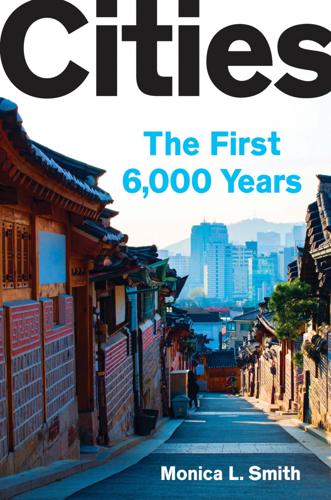
Cities: The First 6,000 Years
by
Monica L. Smith
Published 31 Mar 2019
Wilkinson et al., “Contextualizing Early Urbanization: Settlement Cores, Early States, and Agro-Pastoral Strategies in the Fertile Crescent During the Fourth and Third Millennia BC,” Journal of World Prehistory 27, no. 1 (2014): 44. If any particular link was broken: Monica L. Smith, “The Origins of the Sustainability Concept: Risk Perception and Resource Management in Early Urban Centers,” Research in Economic Anthropology 35 (2015): 215–38. CHAPTER 5: URBAN BUILDING BLOCKS The division of corporeal labor: Monica L. Smith, A Prehistory of Ordinary People (Tucson: University of Arizona Press, 2010). Dunbar has evaluated the ways: Robin Dunbar, Grooming, Gossip, and the Evolution of Language (London: Faber and Faber, 1996).
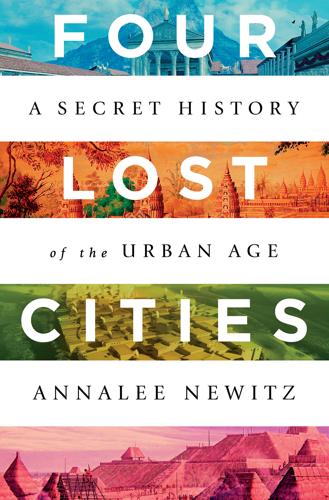
Four Lost Cities: A Secret History of the Urban Age
by
Annalee Newitz
Published 2 Feb 2021
“Household Archaeology at Angkor Wat,” Khmer Times, July 7, 2016, https://www.khmertimeskh.com/25557/household-archaeology-at-angkor-wat/. 21. Lustig and Lustig, “Following the Non-Money Trail.” 22. Eileen Lustig, “Money Doesn’t Make the World Go Round: Angkor’s Non-Monetization,” in Economic Development, Integration, and Morality in Asia and the Americas, ed. D. Wood, Research in Economic Anthropology, vol. 29 (2009), 165–99. 23. Lustig, “Money Doesn’t Make the World Go Round.” 24. Mitch Hendrickson et al., “Industries of Angkor Project: Preliminary Investigation of Iron Production at Boeng Kroam, Preah Khan of Kompong Svay,” Journal of Indo-Pacific Archaeology 42 (2018): 32–42, https://journals.lib.washington.edu/index.php/JIPA/article/view/15257/12812. 25.

Less Is More: How Degrowth Will Save the World
by
Jason Hickel
Published 12 Aug 2020
Ideas for how we can prevent the ruin of our climate, roll back the ongoing sixth mass extinction, and avert societal collapse. It gives us a glimpse of how we can build something better out of the wreckage of what is. Jason Hickel offers a raft of intersecting, overlapping and mutually reinforcing ideas from history, economics, anthropology, philosophy, science, and more. This is the kind of broad thinking that’s required to achieve the rapid transition we need. The coronavirus crisis made it evident that if governments are determined enough and driven enough by circumstances — and by the will of their peoples — then they can do things that they have been calling impossible for years: a citizens’ income, debt cancellation, wealth taxes, nationalisations where necessary, you name it.
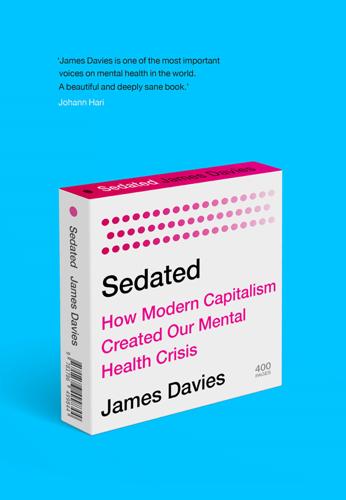
SEDATED: How Modern Capitalism Created Our Mental Health Crisis
by
James. Davies
Published 15 Nov 2021
(eds.) (2014), Suffering and Bioethics, Oxford: Oxford University Press, p.76. 6 We see this thinking permeating those on the economic right (in the works of Friedrich Hayek and Milton Friedman), as well as the left (Jürgen Habermas, Theodor Adorno and Erich Fromm). 7 For a particularly useful introduction to key works in this area, see: Keith, H., and Hann, C. (2011), Economic Anthropology, London: Polity Press. 8 However, for many analysts, including myself, it is clear that such calculated intent was very much at the heart of the pharmaceutical industry’s promotion of psychiatric drugs. Chapter Two: The New Culture of Proliferating Debt and Drugs 1 PWC (2020), ‘COVID-19: UK Economic Update’, https://www.pwc.co.uk/premium/covid-19/uk-economic-update-covid-19.pdf (accessed Aug. 2020). 2 Bank of England (2020), ‘Money and Credit – April 2020’, https://www.bankofengland.co.uk/statistics/money-and-credit/2020/april-2020 (accessed Aug. 2020). 3 TUC (2020), ‘Record household debt levels show why workers need a new deal’, https://www.tuc.org.uk/blogs/record-household-debt-levels-show-why-workers-need-newdeal (accessed Dec. 2020). 4 Almenberg, Johan, et al. (2018), ‘Attitudes towards debt and debt behaviour’, https://voxeu.org/article/our-changing-attitudes-towards-household-debt (accessed Dec. 2020). 5 Brewer, J. (2017), ‘Applicants to UK arts and design university courses decline by over 14,000 this year.
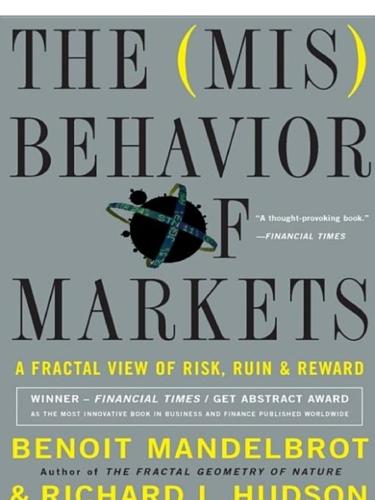
The Misbehavior of Markets: A Fractal View of Financial Turbulence
by
Benoit Mandelbrot
and
Richard L. Hudson
Published 7 Mar 2006
And so on, down twenty-odd levels of branching from large tubes to very small, according to anatomical studies. The outcome: a fractal spacefilling sponge of lung tissue, with convoluted, branching airways providing oxygen in precisely regulated volume and velocity to millions of tiny air sacs. Fractals in society. Economics, anthropology, history, musicology, architecture—the list of social sciences and humanities in which fractals have been found is long, indeed. The photograph (American Geographic Institute) is an aerial view of the Ba-ili settlements of southern Zambia. It is an enclosure to pen in livestock; but it is formed of dwellings, side-by-side, in a ring.

The Alternative: How to Build a Just Economy
by
Nick Romeo
Published 15 Jan 2024
Economists with a PhD degree from Asia, Canada, Scandinavia, and the United States showed higher levels of ideological bias than those with PhD degrees from South America, Africa, Italy, Spain, and Portugal. Those whose research focused on the history of economic thought, heterodox approaches, economic sociology, and economic anthropology showed less ideological bias than those whose main research focus was on macroeconomics, financial economics, international economics, and public economics. What economists studied as undergraduates also predicted ideological bias. Those who majored in economics or business showed the strongest bias, while those who studied law, history, anthropology, psychology, or language and literature showed less.
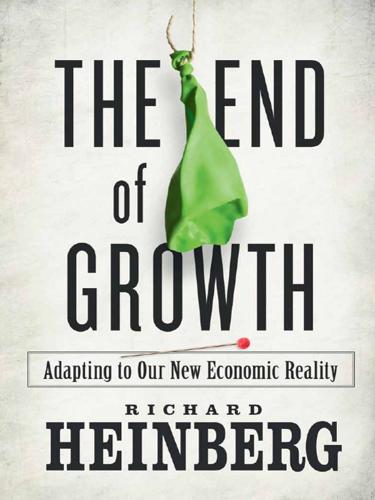
The End of Growth: Adapting to Our New Economic Reality
by
Richard Heinberg
Published 1 Jun 2011
In world of absolute advantage, the sectors that gain need not be in the same country as the sectors that lose. Herman Daly has made this point, but apparently Ricardo also recognized that comparative advantage depends on capital being invested domestically, which was the case in his day. 50. Frances Berdan, “Trade and Markets in Precapitalist States,” in Economic Anthropology, Stuart Plattner, ed. (Stanford, CA: Stanford University Press, 1989). 51. Jeff Rubin, Why Your World Is About To Get a Whole Lot Smaller: Oil and the End of Globalization (New York: Random House, 2009). 52. Jeff Rubin, “Oil and the End of Globalization,” transcript and video of a presentation at 2010 ASPO-USA, The Oil Drum, posted November 8, 2010, theoildrum.com/node/7095#more. 53.
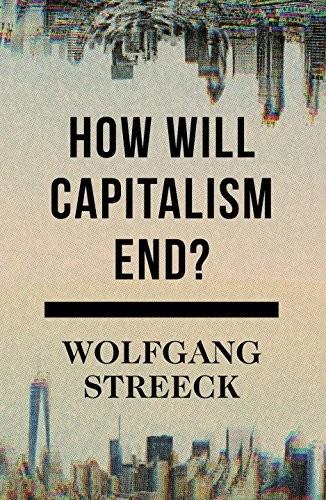
How Will Capitalism End?
by
Wolfgang Streeck
Published 8 Nov 2016
In what follows, I shall make use of Monsen and Downs’s productive distinction between these two modes of provision, with inherent capacities favouring different kinds of goods: one mode is public and collective, administered by state authorities; the other is private and individual, mediated by commercial markets. But rather than comparing the two modes synchronically, or examining them within the eternal property space of economic anthropology, I will take a longitudinal view on the development of their mutual relationship. Moreover, instead of anchoring product diversification in a timeless human disposition towards status-seeking, I will relate it to a particular mode of utility maximization favoured in the transition from a need-supplying to a want-supplying economy, from sellers’ to buyers’ markets, and from poor to saturated to affluent societies, which was getting under way around the time (1971) that Monsen and Downs’s article appeared.
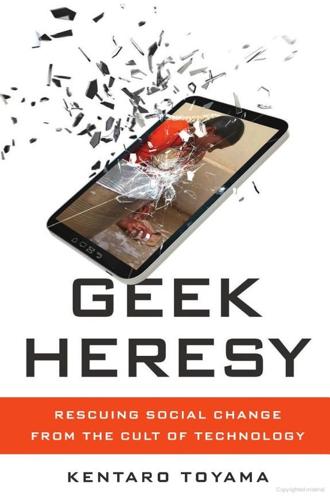
Geek Heresy: Rescuing Social Change From the Cult of Technology
by
Kentaro Toyama
Published 25 May 2015
Pew Research Center, March 19, 2012, www.pewinternet.org/files/old-media//Files/Reports/2012/PIP_Teens_Smartphones_and_Texting.pdf. Levitt, Steven D., and Stephan J. Dubner. (2006). Freakonomics: A Rogue Economist Explores the Hidden Side of Everything, rev. ed. William Morrow. Lewis, David (2005). Anthropology and development: The uneasy relationship. Pp. 472–486 in James G. Carrier, ed., A Handbook of Economic Anthropology. Edward Elgar, http://eprints.lse.ac.uk/253/1/Anthropology_and_development_a_brief_overview.pdf. Lewis, Oscar. (1961). The Children of Sanchez: Autobiography of a Mexican Family. Vintage. Lincoln, Abraham. (1858). First debate against Stephen Douglas. Ottawa, Illinois, Aug. 21, 1858. Linden, Leigh L. (2008).

The Mind in the Cave: Consciousness and the Origins of Art
by
David Lewis-Williams
Published 16 Apr 2004
Scarre, C. 1989. Painting by resonance. Nature 338, 382. Schaafsma, P. 1980. Indian Rock Art of the Southwest. Santa Fe: School of American Research. Schaafsma, P. 1992. Rock Art in New Mexico. Sante Fe: Museum of New Mexico Press. Seddon, D. 1978. Relations of Production: Marxist Approaches to Economic Anthropology. London: Frank Cass. Sedman, G. 1966. A comparative study of pseudohallucinations, imagery and true hallucinations. British Journal of Psychiatry 112, 9–17. Segall, M. H., Campbell, D. T. & Herskovits, M. J. 1966. The Influence of Culture on Visual Perception. New York: Bobbs-Merrill.
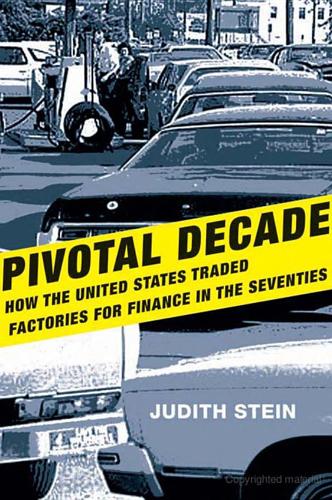
Pivotal Decade: How the United States Traded Factories for Finance in the Seventies
by
Judith Stein
Published 30 Apr 2010
He was “well aware that some of those whose names have been associated with national economic planning are operating from a different agenda.”85 He, and businessmen less sympathetic with the idea of planning, read the names of those participating in the congressional conference “Economic Planning in a Free Society,” on May 22. Yes, there was Leontief, Leon Keyserling, a former CEA chairman, the president of the NAM, and a vice president and chief economist of GM. But present, too, was Paul Sweezy, publisher of the Marxist Monthly Review, and a mélange of Marxist professors of economics, anthropology, and political science.86The White House saw “‘far out,’ anti-power structure spokesmen.”87 The masses were not demonstrating in the streets for Humphrey-Javits in 1975, but they did not rally for NRA in 1933, either. In 1933 key White House officials—Adolph Berle, Raymond Moley, Rexford Tugwell—and then President Roosevelt himself supported NRA, but Humphrey-Javits had no such luck.
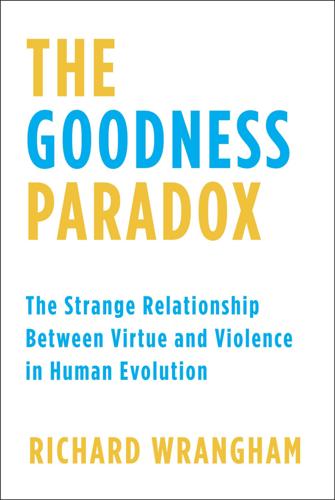
The Goodness Paradox: The Strange Relationship Between Virtue and Violence in Human Evolution
by
Richard Wrangham
Published 29 Jan 2019
Marlowe, Frank. 2002. “Why the Hadza are still hunter-gatherers.” In Ethnicity, Hunter-Gatherers, and the “Other”: Association or Assimilation in Africa, edited by Sue Kent (Washington, D.C.: Smithsonian Institution Press), pp. 247–75. Marlowe, Frank W. 2004. “What explains Hadza food sharing?” Economic Anthropology 23: 69–88. ———. 2005. “Hunter-gatherers and human evolution.” Evolutionary Anthropology 14: 54–67. Mashour, George A., Erin E. Walker, and Robert L. Martuza. 2005. “Psychosurgery: Past, present, and future.” Brain Research Reviews 48: 409–19. Mathew, Sarah, and Robert Boyd. 2011.
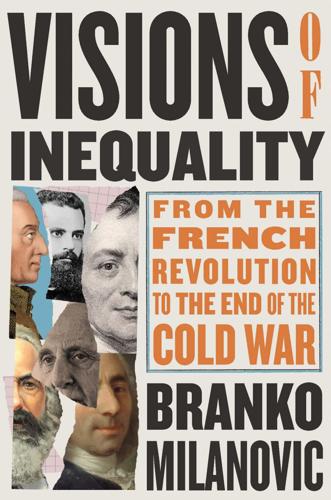
Visions of Inequality: From the French Revolution to the End of the Cold War
by
Branko Milanovic
Published 9 Oct 2023
And Kuznets wrote for more than fifty years, over which time his contributions were extremely varied, ranging from the definition of national accounts to growth and income distribution, to demographics, and to economic development. If a historian of thought were to engage with the writings of an Adam Smith, Marx, or Pareto—spanning political science, philosophy, sociology, epistemology, economics, anthropology, and even psychology—that historian would aim to deal with them in their totality, discussing all or most of these topics as a generalist. A historian of economic thought might focus on economic themes (as, for example, Schumpeter did), or more narrowly on economic themes as seen from the neoclassical angle, as Mark Blaug did by leaving out Pareto’s sociological volumes or Marx’s philosophy. 2 But I ignore all parts of an author’s work—however important—that can be logically separated from what it has to offer on income distribution.
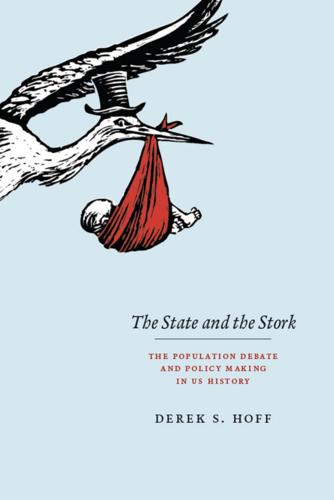
The State and the Stork: The Population Debate and Policy Making in US History
by
Derek S. Hoff
Published 30 May 2012
Pearl’s vision of developing the field of demography as a natural science did not prevail; after the initial skirmishes surrounding the creation of the PAA, leading practitioners such as Frank Notestein would successfully define demography as a social science dedicated to the statistical study of human populations.141 But Pearl’s anti-eugenic Malthusianism would prevail. In H. L. Menken’s American Mercury magazine, Pearl called eugenics “a mingled mess of ill-grounded and uncritical sociology, economics, anthropology, and politics, full of emotional appeals to class and race prejudices, solemnly put forth as science, and unfortunately accepted as such by the general public.”142 And he wrote editorials such as “World Overcrowding: Saturation Point for Earth’s Population Soon Will Be in Sight.”143 Pearl’s alarmism waned in the late 1920s, but in its wake he espoused a novel and moderate variation of Malthusian theory: the idea that somewhere between a too-high population (which presses on resources and is too large for efficient production) and a toolow population (which retards economies of scale) resides an “optimum population.”144 During the 1920s, American demographers and economists forged a rough consensus that the earth—and the United States— were rapidly approaching a state of overpopulation—that their optimal populations were lower.
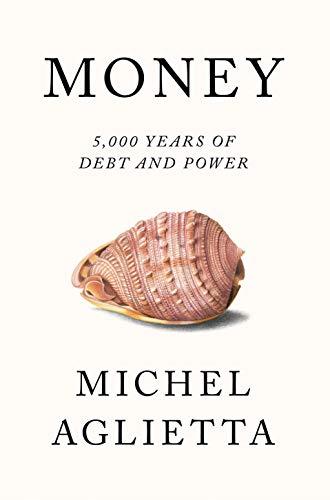
Money: 5,000 Years of Debt and Power
by
Michel Aglietta
Published 23 Oct 2018
Title: Money : 5,000 years of debt and power / Michel Aglietta. Other titles: Monnaie. English Description: Brooklyn : Verso, 2018. Identifiers: LCCN 2018024563 | ISBN 9781786634412 (hardback) | ISBN 9781786634443 (United States E Book) | ISBN 9781786634436 (United Kingdom E Book) Subjects: LCSH: Monetary policy. | Money – History. | Economic anthropology. | BISAC: POLITICAL SCIENCE / Economic Conditions. | SOCIAL SCIENCE / Anthropology / Cultural. | POLITICAL SCIENCE / History & Theory. Classification: LCC HG230.3 .A3913 2018 | DDC 332.4 – dc23 LC record available at https://lccn.loc.gov/2018024563 Typeset in Minion Pro by Hewer Text UK Ltd, Edinburgh Printed in the US by Maple Press VD1_1 Contents Acknowledgements Introduction I.Money as a Relation of Social Belonging 1Money Is the Foundation of Value 2Logics of Debt and Forms of Sovereignty II.The Historical Trajectories of Money 3From Ancient Empires to the Gold Standard 4The Upheavals of the Twentieth Century III.Crises and Monetary Regulation 5Monetary Crises in History 6Monetary Regulation Under Capitalism IV.The Enigma of International Currency 7International Currency Faced with the Test of History 8Transitioning to a New International Monetary System Notes Bibliography Index Acknowledgements This book brings together thirty-five years of studies on money.
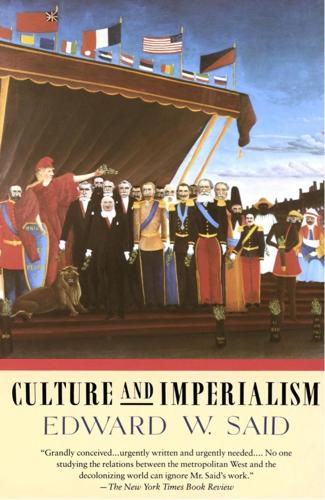
Culture and Imperialism
by
Edward W. Said
Published 29 May 1994
Climate and geography dictated certain character traits in the Indian; Orientals, according to Lord Cromer, one of their most redoubtable rulers, could not learn to walk on sidewalks, could not tell the truth, could not use logic; the Malaysian native was essentially lazy, just as the north European was essentially energetic and resourceful. V. G. Kiernan’s book The Lords of Human Kind, referred to earlier, gives a remarkable picture of how widespread these views were. As I suggested earlier, disciplines like colonial economics, anthropology, history, and sociology were built out of these dicta, with the result that almost to a man and woman the Europeans who dealt with colonies like India became insulated from the facts of change and nationalism. A whole experience—described in meticulous detail in Michael Edwardes’s The Sahibs and the Lotus—with its own integral history, cuisine, dialect, values, and tropes more or less detached itself from the teeming, contradictory realities of India and perpetuated itself heedlessly.
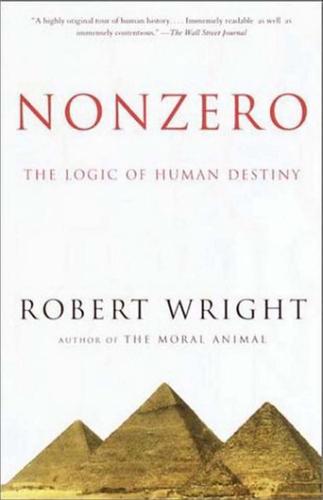
The Moral Animal: Evolutionary Psychology and Everyday Life
by
Robert Wright
Published 1 Jan 1994
Peirce, Charles S. (1878) “How to Make Our Ideas Clear,” in Justus Buchler, ed. (1955), Philosophical Writings of Peirce. Dover. Philo (1927) “On the Cherubim,” in Philo in Ten Volumes. Harvard University Press (1927). Pinker, Steven (1997) How the Mind Works. W. W. Norton. Plattner, Stuart, ed. (1989) Economic Anthropology. Stanford University Press. Pohl, John M. D. (1994) “Mexican Codices, Maps, and Lienzos as Social Contracts,” in Boone and Mignolo, eds. (1994). Popper, Karl (1957) The Poverty of Historicism. Routledge and Kegan Paul. Price, T. Douglas, and James A. Brown (1985) “Aspects of Hunter-Gatherer Complexity,” in Price and Brown, eds. (1985).
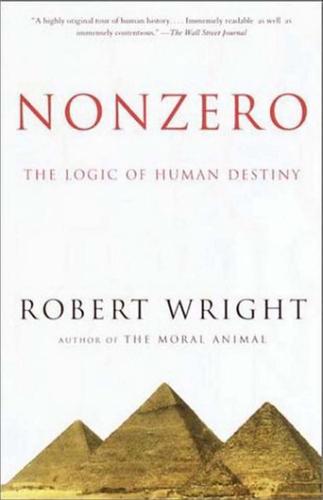
Nonzero: The Logic of Human Destiny
by
Robert Wright
Published 28 Dec 2010
Peirce, Charles S. (1878) “How to Make Our Ideas Clear,” in Justus Buchler, ed. (1955), Philosophical Writings of Peirce. Dover. Philo (1927) “On the Cherubim,” in Philo in Ten Volumes. Harvard University Press (1927). Pinker, Steven (1997) How the Mind Works. W. W. Norton. Plattner, Stuart, ed. (1989) Economic Anthropology. Stanford University Press. Pohl, John M. D. (1994) “Mexican Codices, Maps, and Lienzos as Social Contracts,” in Boone and Mignolo, eds. (1994). Popper, Karl (1957) The Poverty of Historicism. Routledge and Kegan Paul. Price, T. Douglas, and James A. Brown (1985) “Aspects of Hunter-Gatherer Complexity,” in Price and Brown, eds. (1985).

The WEIRDest People in the World: How the West Became Psychologically Peculiar and Particularly Prosperous
by
Joseph Henrich
Published 7 Sep 2020
The Better Angels of Our Nature: Why Violence Has Declined. New York: Viking. Pinker, S. (2018). Enlightenment Now: The Case for Reason, Science, Humanism, and Progress. New York: Viking. Pirenne, H. (1952). Medieval Cities. Princeton, NJ: Princeton University Press. Plattner, S. (1989). Economic behavior in markets. In S. Plattner (ed.), Economic Anthropology (pp. 209–221). Stanford, CA: Stanford University Press. Plomin, R., DeFries, J. C., Knopik, V. S., and Neiderhiser, J. M. (2016). Top 10 replicated findings from behavioral genetics. Perspectives in Psychological Science 11 (1), 3–23. Plomin, R., DeFries, J., McClearn, G. E., and McGuffin, P. (2001).
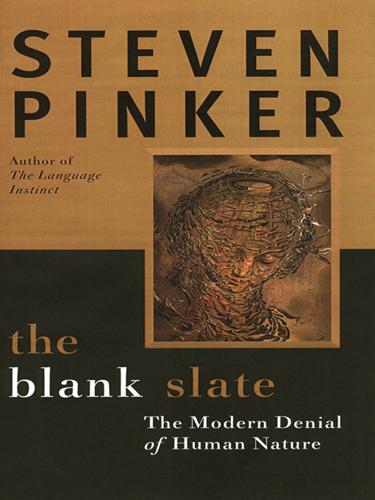
The Blank Slate: The Modern Denial of Human Nature
by
Steven Pinker
Published 1 Jan 2002
Cartwright, J. 2000. Evolution and human behavior. Cambridge, Mass.: MIT Press. Caryl, P. G. 1994. Early event-related potentials correlate with inspection time and intelligence. Intelligence, 18, 15–46. Cashdan, E. 1989. Hunters and gatherers: Economic behavior in bands. In S. Plattner (Ed.), Economic anthropology. Stanford, Calif.: Stanford University Press. Caspi, A. 2000. The child is father of the man: Personality continuities from childhood to adulthood. Journal of Personality and Social Psychology, 78, 158–172. Catalano, S. M., & Shatz, C. J. 1998. Activity-dependent cortical target selection by thalamic axons.
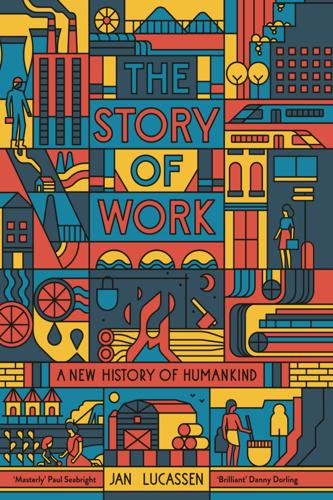
The Story of Work: A New History of Humankind
by
Jan Lucassen
Published 26 Jul 2021
‘Incidental Urbanism: The Structure of the Prehispanic City in Central Mexico’, in Joyce Marcus & Jeremy A. Sabloff (eds). The Ancient City: New Perspectives on Urbanism in the Old and New World (Santa Fe, NM: School for Advanced Research Press, 2008), pp. 273–97. Hodges, Richard & John F. Cherry. ‘Cost-Control and Coinage: An Archaeological Approach to Anglo-Saxon England’, Research in Economic Anthropology, 5 (1983), pp. 131–83. Hoffman, Carl L. ‘Punan Foragers in the Trading Networks of Southeast Asia’, in Carmel Schrire (ed.), Past and Present in Hunter Gatherer Studies (Walnut Creek, CA: Left Coast Press, 2009), pp. 123–49. Hoffmann, Richard C. ‘Frontier Foods for Late Medieval Consumers: Culture, Economy, Ecology’, Environment and History, 7(2) (2001), pp. 131–67.
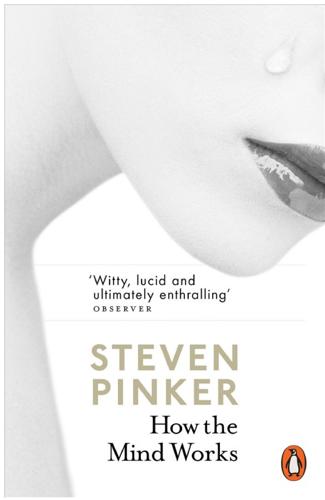
How the Mind Works
by
Steven Pinker
Published 1 Jan 1997
Newman (Ed.), 1956, The world of mathematics, Vol. 4. New York: Simon & Schuster. Carroll, L. 1896/1977. Symbolic logic. In W. W. Bartley (Ed.), 1977, Lewis Carroll’s Symbolic Logic. New York: Clarkson Potter. Cashdan, E. 1989. Hunters and gatherers: Economic behavior in bands. In S. Plattner (Ed.), Economic anthropology. Stanford, Calif.: Stanford University Press. Cashdan, E. 1994. A sensitive period for learning about food. Human Nature, 5, 279–291. Cavalli-Sforza, L. L., Menozzi, P., & Piazza, A. 1993. Demic expansions and human evolution. Science, 259, 639–646. Cavalli-Sforza, L. L., & Feldman, M. W. 1981.
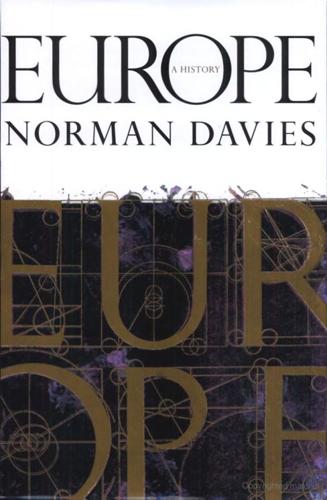
Europe: A History
by
Norman Davies
Published 1 Jan 1996
Their periodic fureurs were outbursts of desperation. Their revolving cycle of fortune and misfortune was far more important to them than any thought of social revolution.4 Peasant studies is one of several flourishing new academic fields. It offers great opportunity to examine the interrelations of social, economic, anthropological, and cultural themes. It was specially suited to comparative analysis—both between European regions and between continents. A Journal of Peasant Studies (1973– ) grew out of a seminar centred at London’s School of Oriental and African Studies. Its editorial statement stressed the sheer size of the world’s peasantry and their problems: Of the underprivileged majority of mankind, [the peasants] are the most underprivileged … No social class has a longer history of struggle against such conditions … Hitherto, scholarly periodicals have treated peasants in a peripheral way.
…
Organized crime: police, detectives, criminal underclass 28. Private charities 29. Education: primary, technical, scientific, executive, female 30. Literacy and mass culture 31. Leisure: organized recreation and sport 32. Youth movements 33. Religious trends: fundamentalism, temperance, worker priests 34. Social sciences: economics, anthropology, ethnography, etc. 35. Collectivism: industrial and urban psychology 36. Consumerism 37. Class consciousness 38. National consciousness 39. Political consciousness 40. Extension of the electorate: universal suffrage, suffragettes 41. Political parties with mass constituencies 42.

Africa: A Biography of the Continent
by
John Reader
Published 5 Nov 1998
S., 1888, Plymouth Armada Heroes, London Hays, J.D., Imbrie, J., and Shackleton, N.J., 1976, ‘Variations in the Earth's orbit: pacemaker of the ice ages’, Science, vol. 194, pp. 1121– 32 Heese, J.A., 1971, Die Herkoms van die Afrikaner 1657 – 1867, Cape Town Heintz, B., and Jones, A., (eds.), 1987, ‘European sources for sub-Saharan Africa before 1900: use and abuse’, Paid., (Stuttgart), vol. 33 Hendrik Swellengrebel see Swellengrebel Hennessy, J. Pope, 1890, ‘Is Central Africa worth having?’, The Nineteenth Century, September, pp. 478 – 87 Herbert, Eugenia W., 1984, Red Gold of Africa: Copper in Precolonial History and Culture, Madison, Wis., University of Wisconsin Press Herskovits, M.J., 1952 [1940], Economic Anthropology, New York, NY, Alfred A. Knopf Hertslet, Sir E., 1909, The Map of Africa by Treaty, 3rd edn, London, HMSO, vol. 2 Hess, R.L., 1963, ‘Italy and Africa: colonial ambitions in the First World War’, J. Afr. Hist., vol. 4, pp. 105 – 26 Hill, Allan, 1986, Insights into Child Mortality in the Sahel from some Small-scale Studies in Mali, New York, NY, Population Council (Fertility Determinants Research Notes 12) Hill, Andrew, 1985, ‘Early hominid from Baringo, Kenya’, Nature, vol. 315, pp. 222 – 4 Hill, Andrew, 1987, ‘Causes of perceived faunal change in the later Neogene of East Africa’, J.
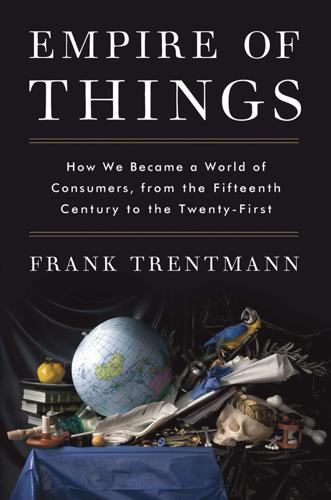
Empire of Things: How We Became a World of Consumers, From the Fifteenth Century to the Twenty-First
by
Frank Trentmann
Published 1 Dec 2015
Tronto, Moral Boundaries: A Political Argument for an Ethic of Care (New York, 1994); and Andrew Sayer, ‘Moral Economy and Political Economy’, in: Studies in Political Economy 61, 2000: 79–104. 16. Amanda Berlan, ‘Making or Marketing a Difference? An Anthropological Examination of the Marketing of Fair-trade Cocoa from Ghana’ in: Geert De Neve et al., ‘Hidden Hands in the Market’, in: Research in Economic Anthropology 28, 2008: 171–94 171–94; see also: Michael K. Goodman, ‘Reading Fair Trade: Political Ecological Imaginary and the Moral Economy of Fair-trade Goods’, Political Geography 23, 2004: 891–915. 17. John Wilkinson & Gilberto Mascarenhas ‘The Making of the Fair-trade Movement in the South: The Brazilian Case’ in: Laura T.